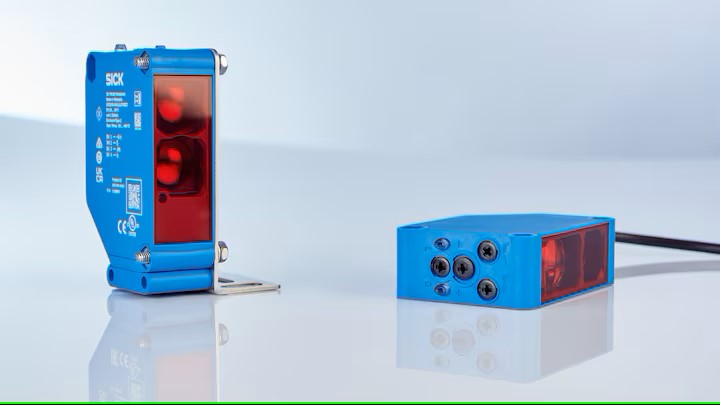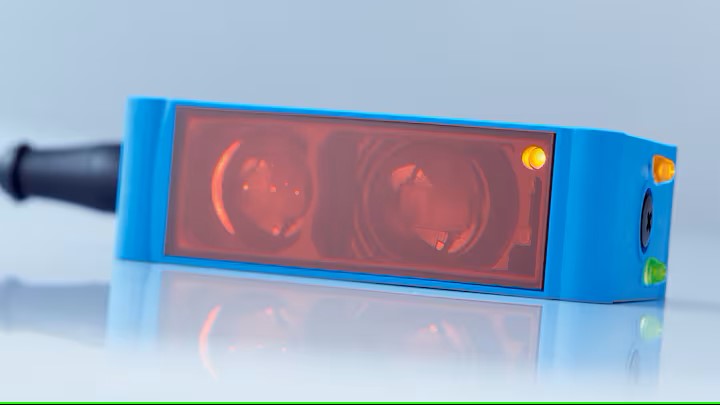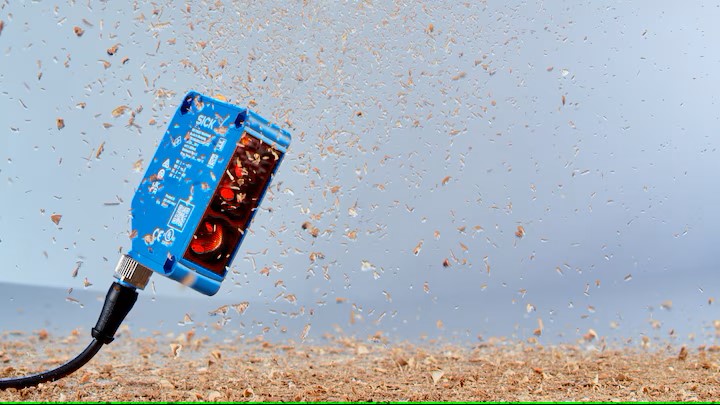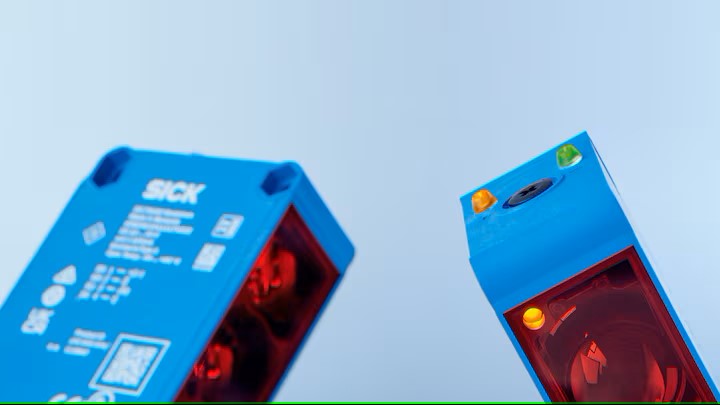The reliable sensors in dusty environments and for applications with long sensing range
The G20 sensors enable reliable object detection over longer distances and are particularly well-suited for use in dusty environments thanks to the high operating reserve. They are compact, economical and offer an excellent price-performance ratio. The additional front LED and the rotary switches facilitate commissioning and operational checks. The light/dark switching, adjustable sensitivity and configurable signal delay make the photoelectric sensors flexible for use in numerous applications. They are also fully compatible with each other in terms of mounting, as DC and AC/DC devices are available in the same design and with different mechanical mounting options.
G20 AT A GLANCE
Benefits
-Reduced downtime thanks to high reliability and operating reserve, especially in dirty environments
-Reliable object detection over longer distances
-Excellent price/performance ratio thanks to proven technology
-Intuitive and fast commissioning thanks to light/dark switching, additional front LED and adjustable signal delay
-Compact design and availability for DC and AC/DC ensure compatibility when it comes to installation
Features
-Additional front LED provides information on light reception status
-Large sensing range with high operating reserve
-M12 male connector, cable and connection chamber
-DC and AC/DC voltage supply
-Operating temperature range from –30 °C to +60 °C
-Optionally with time delay
ADVANTAGES
 Extended range in a compact housing for DC and AC/DC applications
Extended range in a compact housing for DC and AC/DC applications
The G20 family of photoelectric sensors offers reliable object detection over extended distances. G20 sensors are compact, economical, and offer an outstanding price-performance ratio. Sensing range can be adjusted easily via sensitivity knob. In addition, they are fully installation compatible because DC and AC/DC devices are available in the same design and with various mechanical connections.

Extended range: compact and yet with the longest sensing range. G20 photoelectric sensors are used among other things in crane anticollision control tasks where long sensing ranges are required.

Flexibility: The G20 sensors are available with four different detection principles, three mechanical connection types as well three electrical options for DC or AC/DC, and with an optional adjustable signal delay. The comprehensive product family offers maximum flexibility with light/dark switching, sensitivity adjustment, and various mechanical mounting options. All variants of the G20 are mutually compatible with regard to mounting. Only one bracket is required.
Minimal effort with reliable object detection. The G20 family of photoelectric switches is characterized by high cost-effectiveness. This is due, among other things, to the attractive price/performance ratio, high level of flexibility and fast commissioning.
 Made for dusty environments
Made for dusty environments
Thanks to the high functional reserve, the G20 photoelectric sensors provide reliable operation, especially in dusty environments. This reduces plant downtime in the wood and steel industries, for example. The additional front LED and rotary switches make it easier to commission the system and check the functions. These stand-alone sensors can be used in a wide range of applications thanks to the light/dark changeover switch, adjustable sensitivity, and selectable signal delay as an option. Together with the superior price/performance ratio, this results in high cost-effectiveness.

High functional reserve: dusty and dirty environments? No problem, thanks to their huge functional reserve, the G20 sensors continue to detect reliably and thus reduce plant downtime.

Front LED: An additional front LED provides information on the status of light reception, even when it is installed some distance away. Thanks to the BrightLight LED, the well visible red light also makes commissioning the sensor easier.
Simple commissioning and reliable sensor technology, even under challenging conditions. The G20 family of photoelectric sensors minimizes installation effort and plant downtime. Especially when dusty and dirty environments make detection difficult.
 Malaysia
Malaysia